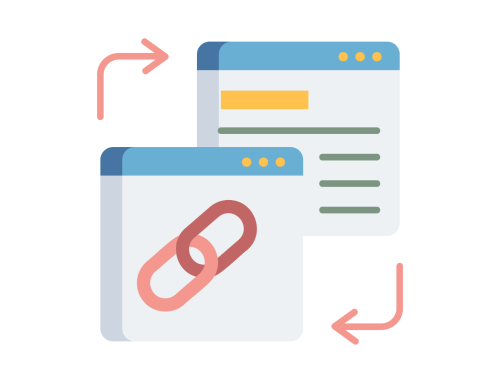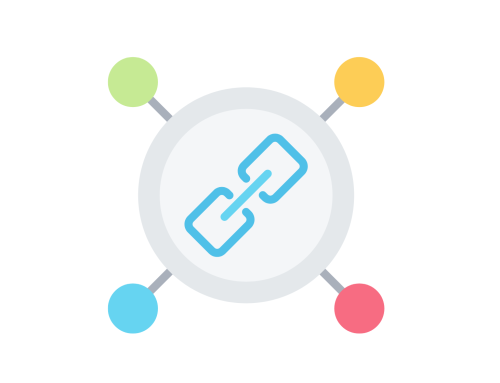If you’re new to SEO, you probably have heard a word too many times, “URL slug.”
But the question is: what is a URL slug?
And why it’s so important for SEO?
If you’re also having the same questions, you have landed in the right place.
In this post, we’ll be explaining a URL slug, why it’s important for search engine optimization and the best practices you should follow to make your URL slug SEO-friendly.
So, without wasting any further time, let’s dive right in.
What is a URL Slug?
A URL slug (also referred to as “website slug”) is a part of the c after the “/” mark that acts as a unique identifier of that particular web page.
The slug always comes after the website’s root domain name or subdirectories.
Every website has one domain name, but to make each page unique and easily accessible for the search engine and readers, it can have thousands or even millions of URL slugs.
Without the URL slug, search engine crawlers or your readers won’t be able to access any pages of your website except your homepage.
For example, the URL slug of the article you are currently reading is “what-is-url-slug.”
If you put this URL slug right after our domain name, you will be automatically redirected to this page.
But even if you put a single word wrong, you’ll get a 404 error.
If you use WordPress or any other CMS platform, the CMS system automatically creates a URL slug for the page each time you create a new page or post.
And generally, they take the page title as the URL slug.
While it’s not harmful to keep your page title as the unique URL slug, it’s not the best practice for your website’s SEO and user experience.
Why URL Slug is Important For SEO?
First and foremost, the URL slug acts as a unique identifier of your web pages.
So without the URL slug, no one (be it your readers or search engine crawlers) would be able to crawl your website and read the page’s content.
And besides that, if you want to rank your web page on Google search, you must also ensure your page slug is optimized correctly.
A poor URL slug structure not only confuses Google search engine crawlers and makes it difficult for them to understand your content, but it also affects your website’s readability and user experience.
A descriptive URL slug with your main keywords in it would be much more beneficial for your audience to understand the context of the page compared to some random page slug like this:
“index.php?id=123&category=5&product=678”
On top of that, if you don’t pay attention to your URL slugs and optimize properly, you will have to constantly face duplicate content issues within your website, making your website look shady in the eyes of Google.
Best Practices to Follow While Creating URL Slug For Better SEO Results
Having URL slugs for different pages won’t automatically make it SEO-friendly.
Mostly, the auto-generated URL slugs are not only terrible for search engine optimization, but it’s also horrible for the user experience of your website.
You have to ensure that each URL slug you create for your pages is properly optimized for better user experience and SEO.
Below, we have shared some best practices that you can follow for creating a perfect URL slug.
1. Keep It Short
A short and easy-to-digest URL not only makes it insanely easy for your readers to understand the context of your page but also helps search engines crawl and index your pages much more efficiently.
In fact, a case study done by Backlinko found a strong correlation between URL length and higher Google ranking.
They found out most top-ranking pages have between 50 – 56 characters within their URL at max.
On top of that, a study by Brafton found that shorter URL gets more social shares than longer URLs.
So whenever you edit your URL slug, make sure it’s between 3 – 5 words at max (excluding your domain and subdirectories).
2. Use Hyphen Symbol
Using Hyphen symbols in between your URL slug makes your URL much easier to read and understand for your audience and for search engine crawlers.
It’s a common practice in the web development space to separate the words using the hyphen, as some web browsers do not allow space between words inside a URL.
If you don’t use hyphens between the words, web browsers may add the “%” symbol or some other characters, making the URL look ugly.
These days, almost 99.9% of websites use the hyphen symbol, and if you use any CMS platform like WordPress, the hyphen symbol will be your default setting.
You can’t change it or disable it on your own.
3. Include Your Target Keyword in Your URL
Including your target keyword within your URL is a must if you want your web page to rank higher on the search results.
The keyword you should include within the URL should be the primary keyword for which you want to rank the page.
When you include your primary keyword within the URL, it gives an indication to Google about the topic of the page.
4. Avoid Using Numbers or Special Characters
You should always avoid using numbers or special characters within your URL.
Using numbers like date or year and some types of special characters like underscore or percentage makes the URL cluttered and hard to digest.
It can create confusion among your audience and search engines about the main topic of your page.
Here’s why you should always make sure that you’re not using any sort of numbers or special characters within your URL to keep it clean.
5. Always Use Lowercase Letters
It’s not mandatory to lowercase letters, nor does it have some sort of SEO benefits.
In fact, most browsers and servers have no effects of using lowercase or capital letters within the URL, and they treat both of the URLs as the same.
Mostly, you will never get any sort of errors, and people can easily access your page with any type of letter.
However, not every server or web browser works the same.
Some servers do return a 404 error if the letters do not match the original URL.
That’s why, to be on the safer side, we always recommend using lowercase letters.
6. Never Change Your URL Slug
If possible, never ever change your URL.
Changing your URL slug without proper planning and redirection can affect your SEO performance very badly, and you might have to face serious consequences.
And it does not just affect your SEO performance.
But it also affects the user experience of your website.
Whenever you change the URL slug of any page, you would have to set up a proper 301 redirect to transfer that traffic to a similar page.
If you don’t set up the 301 redirection, your audience will get a 404 error whenever they type in the old URL.
FAQs Related to URL Slugs
Is there a difference between URL slugs and permalinks in SEO?
The slug is actually just a portion of the permalink. The slug is the part of the URL that comes after the domain name or subdirectories.
On the other hand, the permalink is the whole URL, including the domain, category, or subdirectories.
How long should a URL be for optimal SEO performance?
For better user experience and SEO performance, a URL slug’s length should not exceed more than five words.
Can I change or update URL slugs without affecting SEO?
Yes, you can change or update your URL, but it will affect your SEO to some extent. Even if you 301 redirect the web page to a similar page, you still may notice a significant drop in your SEO rankings.
Should I use hyphens or underscores in my URL slugs for SEO purposes?
As mentioned earlier, you should only use hyphens in your URL as it makes the URL much more readable and user-friendly.
Conclusion
And there you have it.
We hope now you have a clear understanding of what is a URL slug.
The slug is the most important part of the URL, and it can make or break all the efforts you put into your website.
For better SEO performance and user experience, make sure to follow all the best practices we have shared in this post.





